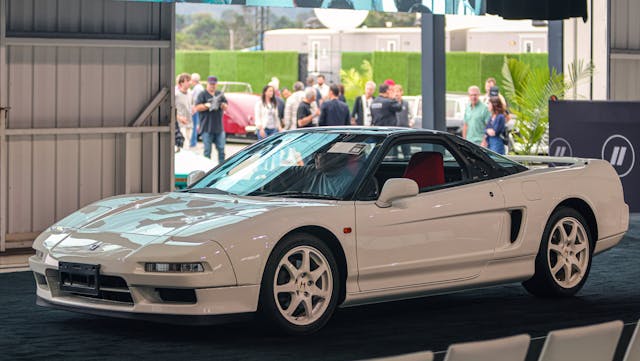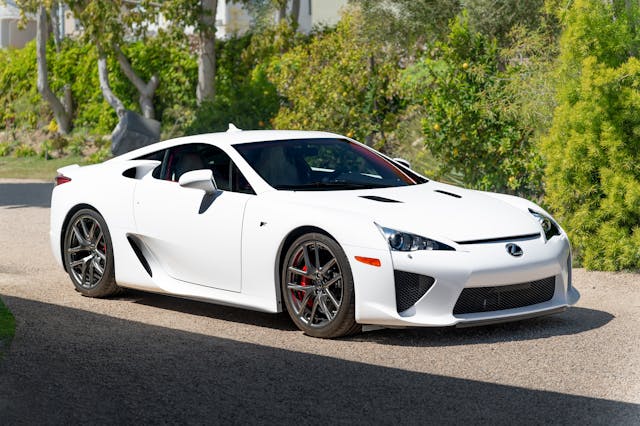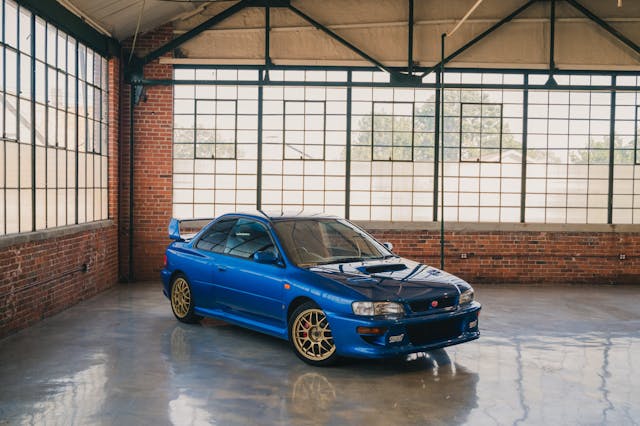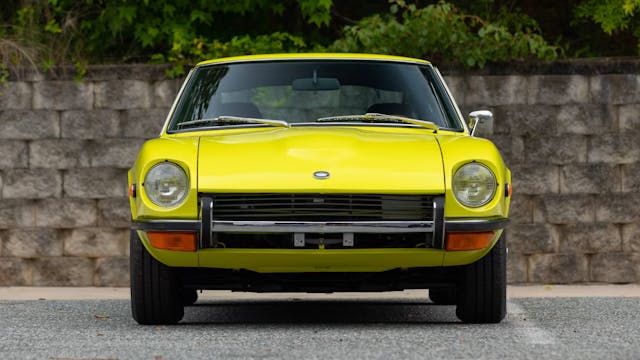The Japanese collector-car market is maturing
There are so many nuances and trends in the old-car market. Identifying and reporting on them is one of the reasons Hagerty Insider exists. When you’ve been around the hobby long enough, though, you start to see familiar patterns, even with cars that are a little newer to the hobby. Take Japanese cars, for instance.
In the 1970s, there was no such thing as a collectible Japanese car.
(This is what’s known in the storytelling business as setting the stage, so fans need not freak out about this characterization, because it gets a lot better for Japanese cars as collectibles … mostly).
Sure, there were the oddities, the antiques and the oddballs, but they were not taken seriously in North America and Europe, where the “real” collector cars came from. Or so many said.

At the dealership where I worked in the 1970s, an interesting Japanese car, a Toyota 2000GT, passed through. My guess is that this came about because of the James Bond connection—a chopped top “convertible” version appeared in 1967’s You Only Live Twice. I remember a few things about the 2000GT that came our way. It was red, had a wooden dash, and I could almost, but not quite, fit my 6’4” frame into it, even though at that time I had a much more limber (and quite a bit smaller) teenage body. The other things I remember include the excellent build quality, and the fact that we sold it to a Toyota dealer who put it on his showroom floor. He used it as a sales tool that would call attention to the fact that Toyota had a bit more automotive history than what Americans saw in the the Corolla sitting next to it.
Though Japanese brands gained traction across the industry, including with legitimate enthusiast cars, their collector status, or lack thereof, remained pretty much the same throughout the 1980s and 1990s. But for those aware, the Toyota 2000GT was starting to turn more heads.
“They have no soul,” I would hear from most car guys back then in regard to cars from Japan. “They build nothing but disposable cars,” or “they only make automotive appliances.”

In reality, everything had changed back in 1970 with the introduction of the Datsun (now Nissan) 240Z. That car did everything well, was affordable, good-looking and, dare I say it, up to the minute and hip. It had soul, performance (okay, it was quick and nimble), and was anything but an appliance. The color palette offered was early Skittles, the transmissions were mostly manuals, and it was the car to have if you were young, single, and had a job to afford the payments.
The 240Z started a trend that took a while to fully take hold. As an appraiser and the publisher of the Hagerty Price Guide, I follow markets as well as individual cars, and the 240Z has been one to watch. It took a long time for the 240Z to break the $25,000 barrier as a collectible, but ever since that happened, there was no looking back. Unsurprisingly, the 240Z brought the 260Z, the 280Z, 300ZX and a host of other cars from Japanese manufacturers to the collectible party, and festivities have been in full swing ever since. Cars that were originally introduced to the American market as well as JDM (Japanese Domestic Market) cars have been on a tear.

What happens next should come as little surprise. With values heading upward in the marketplace, people tend to get cocky. Now, instead of “never collectible,” the new normal is “they will always increase in value.” Sorry gang, but guess what? Even Japanese collector cars are subject to the whims of the market. Collectors who are in their 30s haven’t yet witnessed a downturn in the Japanese collector car market, but that doesn’t mean those cars are immune.
Some, but certainly not all, of this crowd’s favorite Japanese cars have hit the tiniest rough patch. Is it time to run for the exits? Is this a hair-on-fire three alarm emergency? Not even close. I’m just here to tell you that you know a market is beginning to mature when market forces start to temper initial enthusiasm.
Perhaps this is a totally appropriate time for youthful critics to say “OK, Boomer” and stop reading, or vent to Insta their friends about bad information from an automotive dinosaur who has no idea about today’s market because “this time, it’s different.” No, it’s not different, and it’s possible to make, or at least save, a considerable sum of money by simply paying attention.

Let’s go back to some really good Japanese collectible news. Many of the sales at the auctions in Monterey this year showed record prices for Japanese collectibles. Broad Arrow sold a 1995 NSX Type R for $632,000, which is just about twice what one sold for on Bring A Trailer. More good stuff? How about $1,105,000 for Lexus LFA at RM Sotheby’s? That’s the first non-Nurburgring Package car to cross the million dollar mark at auction. (An event we predicted back in 2019.) Going back to Datsuns, Mecum had a 1969 240Z that sold for a hair-raising $132,000. Great news, indeed.

But on the not-so-lucrative side, Mecum also had my personal favorite, a lime-green four-speed 1972 Datsun 240Z, one of 37 completed Vintage-Z program cars. That was the very unusual factory sponsored deal where early Z cars were restored using all-original factory Z parts, and they then sold through a small group of Nissan dealers as a “new-ish” (my word, not theirs) car, complete with a factory warranty. A few of these have since sold for $100,000 and more, but this one was a steal at just $66,000. The list of cars with a factory, or factory-approved restoration is not long, and because most of them have a Prancing Horse on the hood, the commensurate values exceed $1,000,000, and sometimes way more.

Bonhams had the biggest dollar car at Monterey in the Ferrari 412 P, but also a notable no-sale: the very special Subaru Impreza 22B-STI prototype, #000 of 400. This was the first prototype for 1998 WRC rally car homologation, and it is exceedingly original with just 70 kilometers, or about 49 miles showing. Bids stalled out at a reported $365,000, its pre-auction estimate was $450,000 to $550,000.
Markets go up, down, and occasionally sideways, which is another way of expressing that the market is staying stable. Do Japanese cars still have staying power in the marketplace? Yes, absolutely. Will JDM cars continue to rise? Are their North American market siblings the better way to go? It might be time to make those buying decisions for the long term, and not just for the here and now. Will a 60-year-old you be just as excited about driving a right-hand-drive car as a 40-year-old you? The Japanese car market, like its consumers, is maturing.
You have decisions to make. Maybe now is the time to sit or cut sushi.
***
Check out the Hagerty Media homepage so you don’t miss a single story, or better yet, bookmark it. To get our best stories delivered right to your inbox, subscribe to our newsletters.



Lots of big numbers being thrown about there. The average Enthusiast will never pay that much for a car. My personal collectible cost me $6,000.
I have a 1971 Datsun 240Z series one that I purchased from the original owner. The car has a long list of documentation that dates back to the day it was originally purchased. The car has 94K original miles and has been repainted red with a new seats covers. The original dash has no cracks and is a 4 speed with it’s original engine, transmission and differential. The car was built in January 1971, one of the last 240Z series ones. It has the dealer installed aluminum mag wheels and rear black window louvers. The car is fully documented and in in excellent condition for it’s age. It is also a rust free car. Question: What would a car like this be worth? Does mileage make a difference? Does day one documentation make a difference?
Thank you
Paul C